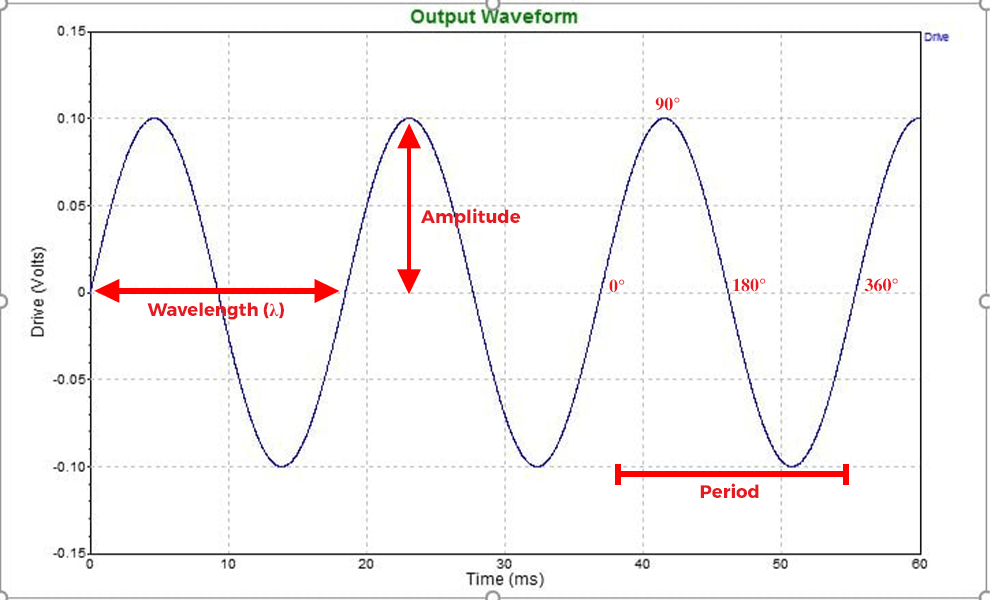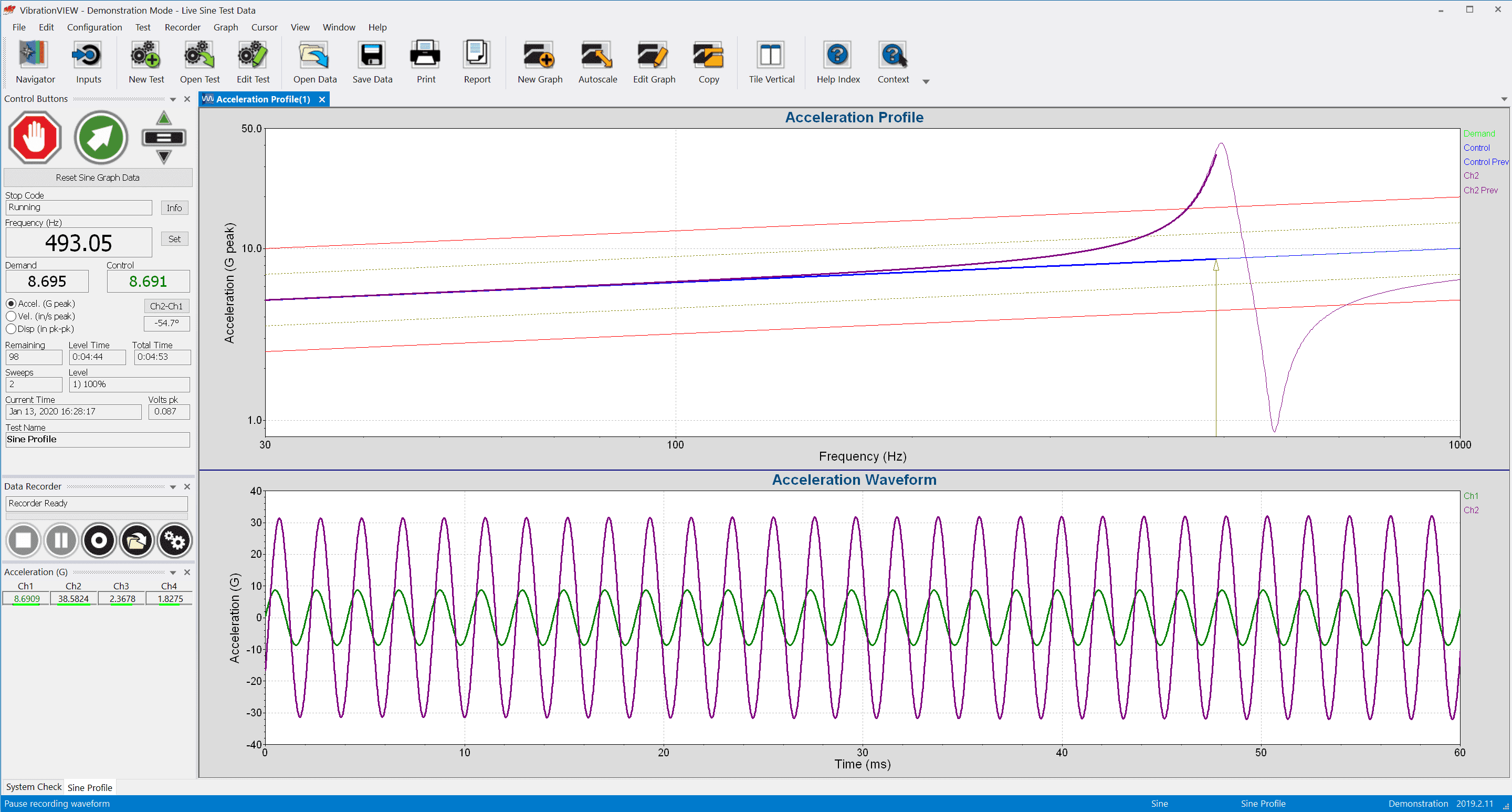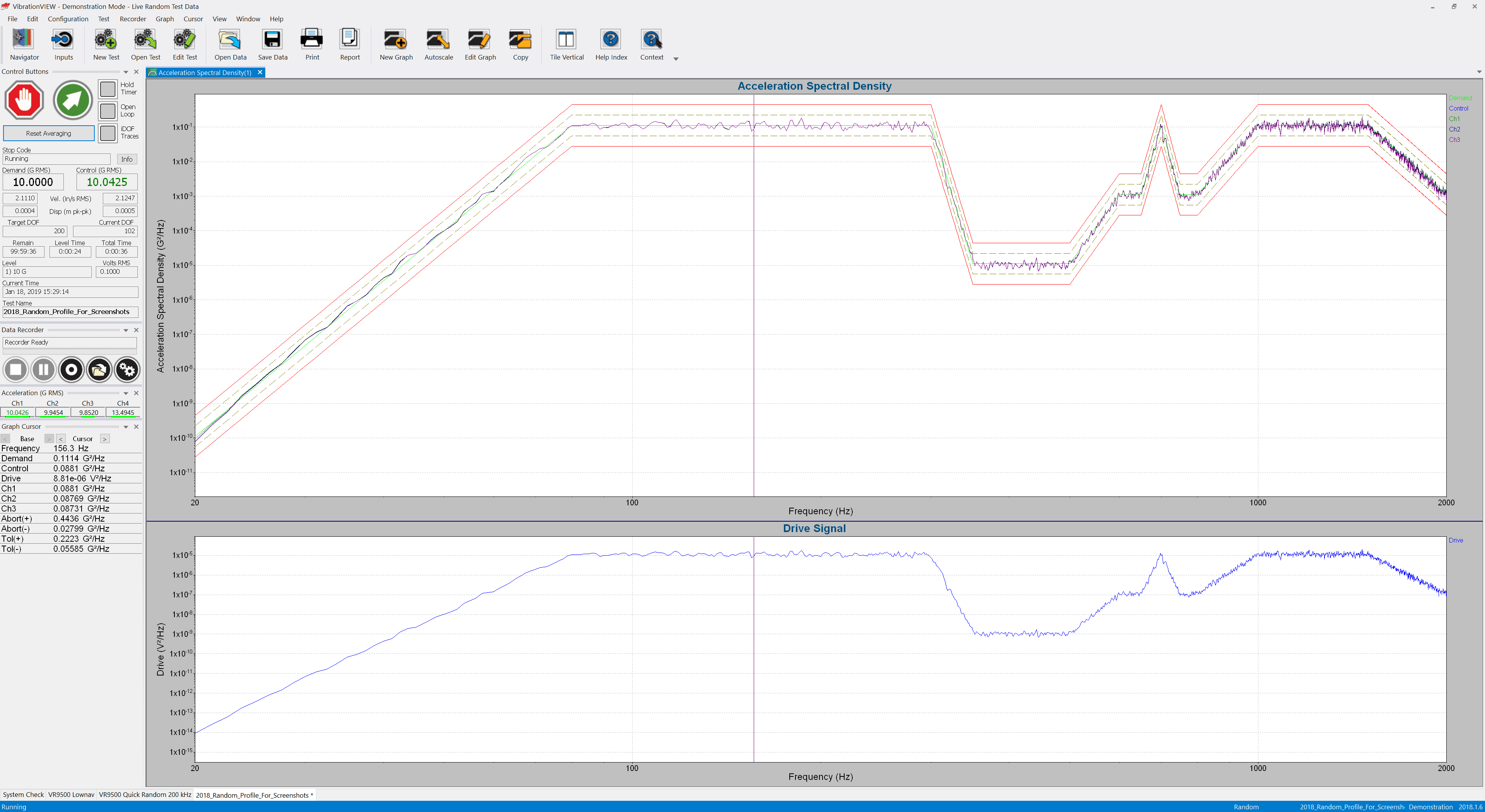Construction of a Sine Wave
October 19, 2021
Back to: Introduction to Vibration Signals
An introduction to waveforms almost always begins with sine. On a graph, the steady oscillation of the sine wave creates a familiar wave-like shape. Not all waveforms are as predictable as a sine wave, but an understanding of sine is helpful before moving on to more complex waveforms.
Basic Measurements
The construction of a wave is easiest to identify on the fixed pattern of a sine wave. The four basic measurements of a sine wave are the cycle, frequency, amplitude, and phase. These measurements are identified in Figure 1 and are discussed in further detail below.

Figure 1. Construction of a sine wave.
Cycle
A sine wave is composed of a smaller, repetitive pattern. A cycle represents one repetition of this pattern. A cycle may begin at zero, at a crest, or at a trough. The distance of a cycle is its wavelength (λ).
Frequency
Frequency measures the number of wave cycles that occur in one second. The unit for frequency is Hertz (Hz).
Amplitude
Amplitude represents the magnitude, or size, of a wave. More precisely, it is the height of a wave from the resting position. In this case, “height” is not merely upwards, and amplitude can be measured from the crest or trough. In vibration testing, the measurement for amplitude is typically acceleration (G).
Phase
Phase refers to a single point within a single wave cycle and it is most important when comparing two or more sine waves. If two waves with the same frequency are perfectly aligned, they are said to have a phase difference of zero and are “in phase.” Sine waves with the same frequency but in a different cycle are “out of phase.”
A full cycle of a periodic sine wave has a value of 360 degrees; therefore, the phase can be measured from zero to 360 degrees. This measurement derives from the trigonometric function of a pure sine tone (Equation 1).
(1) ![]()
Equation 1
Acceleration, Velocity, and Displacement
A sine wave is not motionless, and the measurement of its movement is important to vibration testing. Test engineers expose a product to a controlled vibration and record its response for analysis. The response provides test engineers with information on the structure, safety, and longevity of a product.
Displacement, velocity, and acceleration are several of the most common measurements of waveform motion.
Descriptions
Displacement is the distance an object has moved expressed as units of length such as meters (m) or inches (in).
Velocity measures an object’s displacement with consideration to duration. Different than speed, velocity is the rate of change of direction. Velocity is expressed in units of length divided by units of time such as meters per second (m/s) or inches per second (in/s).
Over a defined distance, the velocity of a wave may increase or decrease. Acceleration is the rate of change in velocity per unit of time. Acceleration is expressed as units of velocity divided by units of time such as meters per second per second (m/s2) and can increase or decrease depending on the force.

Acceleration waveform for a sine sweep test in VibrationVIEW.
For example, when a player hits a baseball with a bat, the acceleration of the ball increases in one direction. When another player catches the ball, the acceleration decreases to zero almost immediately.
Force and Mass
An object accelerates when acted upon by a force. According to Newton’s Second Law of Motion, force equals mass times acceleration. Force can be expressed as kilograms time meters per second per second (kg*m/s2). The units for force are newtons (metric system) or pounds (United States).
Sine vs. Random Vibration
The parameters that measure a sine wave are also applicable to random vibration. Sine waves are repetitive and predictable, but real-world vibration is not. Therefore, random vibration is a better representation of the operational environment.
Still, sine testing is beneficial for determining the natural vibration of the device under test. A device vibrates with the highest amplitude at its natural (or resonant) frequencies. These frequency values help the engineer determine areas of potential damage.
Random Testing
Engineers use random testing to replicate the vibration a device may encounter in the real world. Compared to a sine test, where the frequencies are excited individually, a random vibration test can excite all the frequencies in the spectrum at any defined time.
Random tests are often used to bring a product to failure due to external vibration or the simultaneous excitation of multiple resonant frequencies.

